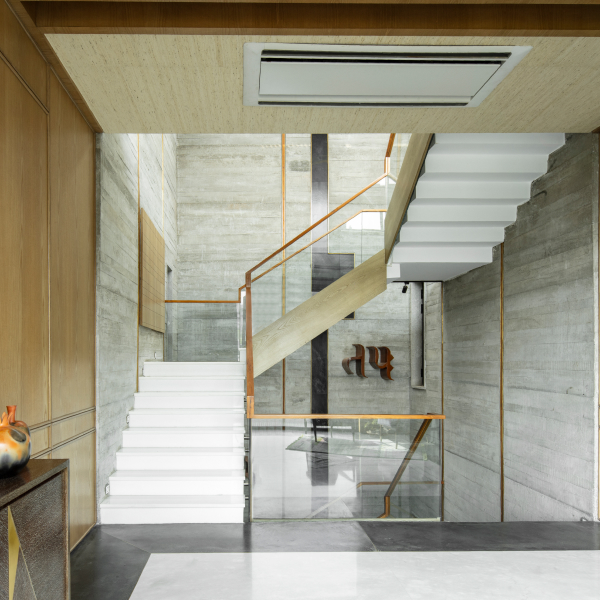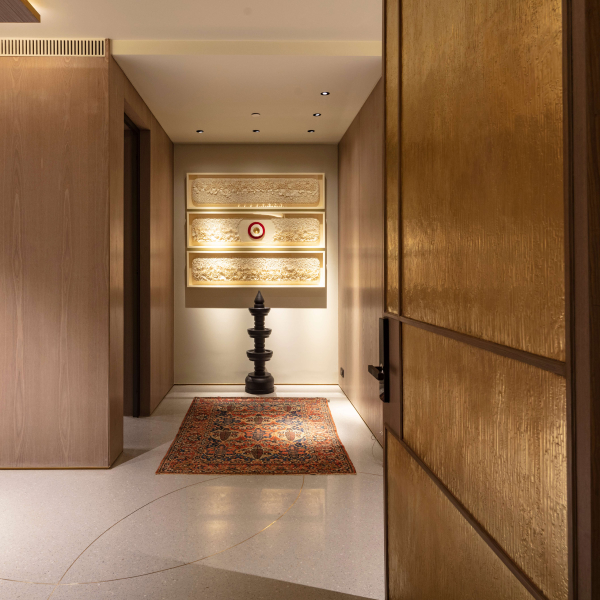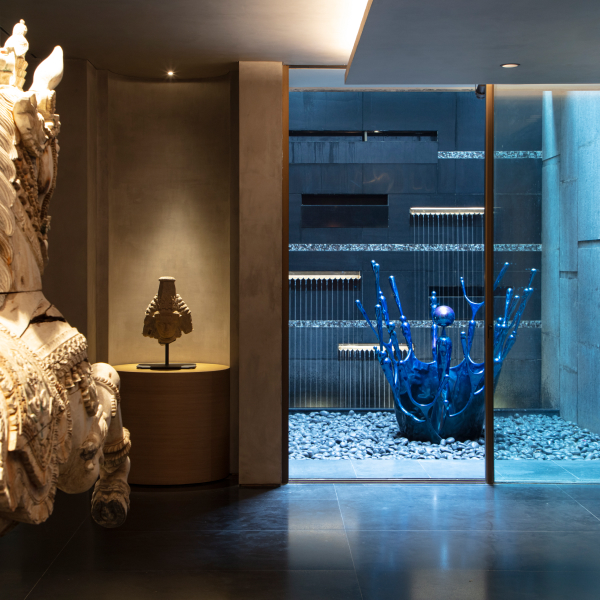Topic: Designing for Well-Being: Creating Spaces that Enhance Mental Health
15 October 2024
15 October 2024

Project: Atul Kumar Residence
Design is never unidimensional; it creates a world that envelops users’ physical, emotional, and mental needs. Research has shown that our environment directly impacts our mental health, influencing our mood, stress levels, productivity, and sense of safety. Elements such as lighting, colour, layout, and materiality profoundly shape our feelings within a space. Designing for mental well-being, therefore, requires a holistic approach that considers the interplay of these various elements.
Imagine a water body flowing through massive stone slabs, its presence revealed through the gentle sound of flowing water. A cool, textured backdrop by the scent of petrichor or a rustic stone wall that evokes a sense of nostalgia can create a deeply immersive experience. Celebrating local craftsmanship and materials by integrating Indian stones, indigenous materials, and sustainably sourced woods enriches the sensory experience and encourages occupants to engage with their surroundings in a meaningful, grounding way.
To leave a lasting impression on visitors, the experience should transcend mere visuals, incorporating auditory, tactile, and olfactory elements. More than creating a focus, these approaches contribute to a serene environment, offering users a resort-like ambience. Additionally, temperature regulation through material selection or smart systems can further uplift users’ moods, creating a comfortable and balanced atmosphere.
Colour has a profound psychological impact, shaping emotions and perceptions of space. Using colour schemes that align with the local landscape creates an immersive experience that feels both grounding and restorative. Neutral and earthy tones work beautifully in residential settings to achieve a natural, calming vibe amid urban life. Incorporating blues and greens creates a relaxing ambience, while warmer tones, such as soft terracottas and muted yellows, lend a sense of cosiness and comfort.
Investing in art that enhances the intended mood is also an excellent approach. The choice of colours, the type of art, and the mood it conveys all add depth to a space, making it feel personal and emotionally resonant.
Visual clutter often leads to mental clutter, contributing to stress and distraction. It’s essential to design elements that enhance storage capacity, minimising unnecessary clutter. A sense of order can be established through a careful choice of materials and balanced design principles. Following a cohesive narrative helps craft a truly clutter-free environment, intentionally curated to avoid unnecessary decor and objects that may contribute to mental overload.
Lighting is crucial for influencing mood and mental well-being. Natural light, in particular, is vital for regulating our circadian rhythms, which affect sleep, energy levels, and emotional balance. Where possible, design spaces that maximise natural light through large windows, skylights, and reflective surfaces, strategically placing windows to capture sunlight throughout the day and create an uplifting atmosphere. When natural light is limited, warm-toned artificial lighting that mimics daylight can be used, avoiding harsh overhead lights that may cause visual discomfort and strain.
Through a thoughtful approach that includes sensory-rich materials, carefully chosen colours, uncluttered layouts, and abundant natural light, we can create environments that nurture the mind, body, and spirit.
Recent Blogs

1 December 2024

4 November 2024

22 September 2024